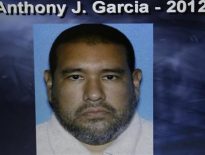PHOENIX (AP) — A new report shows an Arizona wildfire that began with a lightning strike and caused little immediate concern because of its remote location and small size quickly grew into an inferno, leading officials to rapidly order more resources in the hours before the flames killed 19 members of an elite Hotshot crew.

The report from the Arizona State Forestry Division provides precise detail about the response to the fire that began June 28 outside the small town of Yarnell, including the unpredictable weather around the blaze and the exact times in which it escalated and key resources were deployed.
The report doesn’t address the question of why the fire crew was still on the mountain above the town more than an hour after the winds shifted about 180 degrees and brought the fire back toward them. It also wasn’t immediately clear whether the Hotshots were warned of the erratically changing weather before they were forced to take shelter and were killed.
The report describes how the fire worsened hour by hour – causing flames up to 20 feet high – as managers called in inmate and Hotshot firefighting crews and air support.
After the blaze was ignited about 60 miles northwest of Phoenix, an aerial unit assessed it. The unit found the fire to be “less than one acre, in a large boulder field,” with little smoke and no structures at immediate risk.
Officials ordered two inmate crews, an engine and a helicopter to report to the scene early Saturday morning, June 29, to “work multiple lightning fires” in the area.
By the next day, the Yarnell Hill Fire was the only one still burning and had grown only slightly, to about 4 acres. Small, single-engine aircraft were used throughout the day as crews worked the ground.
By 5:30 p.m., the fire was only about 6 acres in size.
Air support was ordered but couldn’t respond due to thunderstorms and high winds, according to the report. Later, a DC-10 capable of dropping large amounts of fire retardant to prevent the spread of flames was available but not ordered due to concerns about its effectiveness in the steep, boulder-strewn terrain and because darkness was setting in.
By 7:38 p.m., the blaze had grown to about 100 acres but was still “advancing slowly.”
On Sunday at about 8 a.m., the 20-member Granite Mountain Hotshots team arrived and headed in to fight the fire, as small aircraft and helicopters worked the blaze from above. Heavy air tankers were ordered just after noon, but only one was able to respond, making multiple retardant drops on the fire.
According to the report, the fire had now increased in size to about 1,000 acres and was burning swiftly through an area that hadn’t experienced a significant wildfire in nearly 50 years.
Two large air tankers were sent back to the Yarnell Hill Fire to try to stall its advance.
A few hours later, at 3:26 p.m., officials received word of heavy winds from a thunderstorm moving into the area as the fire grew.
Soon thereafter, the blaze was so out of control that officials asked for half of the available western U.S. heavy air tanker fleet – six planes. It was about 4 p.m.
Five of the planes weren’t deployed because of the limited number of tankers in the nation’s aerial firefighting fleet and the dangerous weather conditions at the time. Jim Paxon, a spokesman for the Arizona Division of Forestry, which was managing the fire, said one plane had been headed to the fire from California, but engine problems forced it to turn back.
Paxon noted that even if the planes had been available, winds were so strong they couldn’t have been used to save the firefighters’ lives.
“We could have had air tankers stacked up from here to the stratosphere and it wouldn’t have made a difference,” he said Monday. “The fire went through retardant lines like they were non-existent.”
Within 45 minutes, at 4:47 p.m., the Hotshot crew radioed that they were trapped and deploying their emergency shelters. Less than two hours later, 19 of them were found dead. Only one crew member who was assigned as the lookout survived.
A national team of investigators is working to understand more about the firefighters’ deaths and is expected to finish an initial report in about two months.
Paxon said the behavior of the fire and the enormous “blowup” when the winds shifted was highly unusual.
“It was just an extreme situation,” he said.
The fire destroyed more than 100 homes before it was fully contained July 10.





